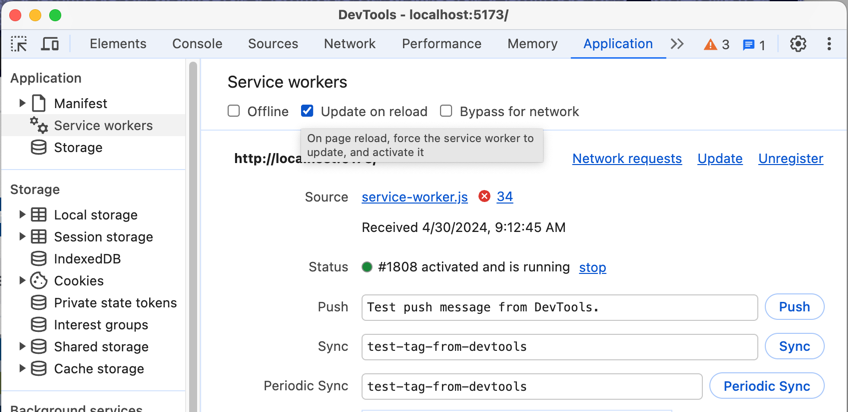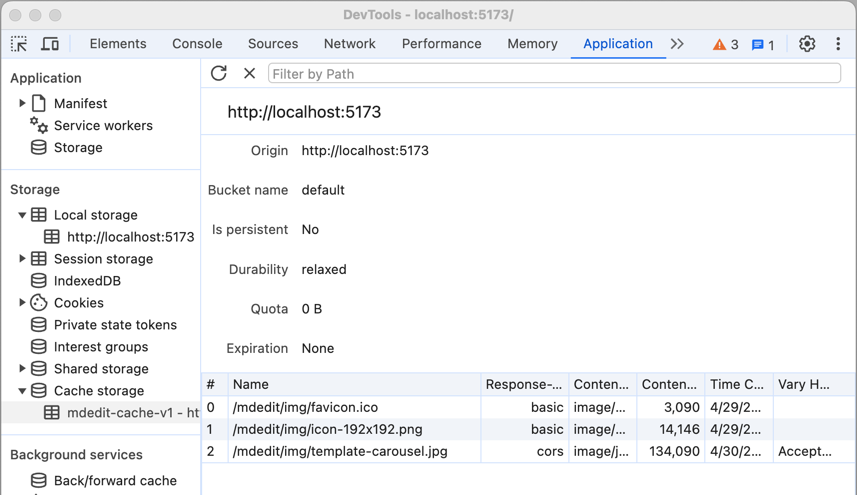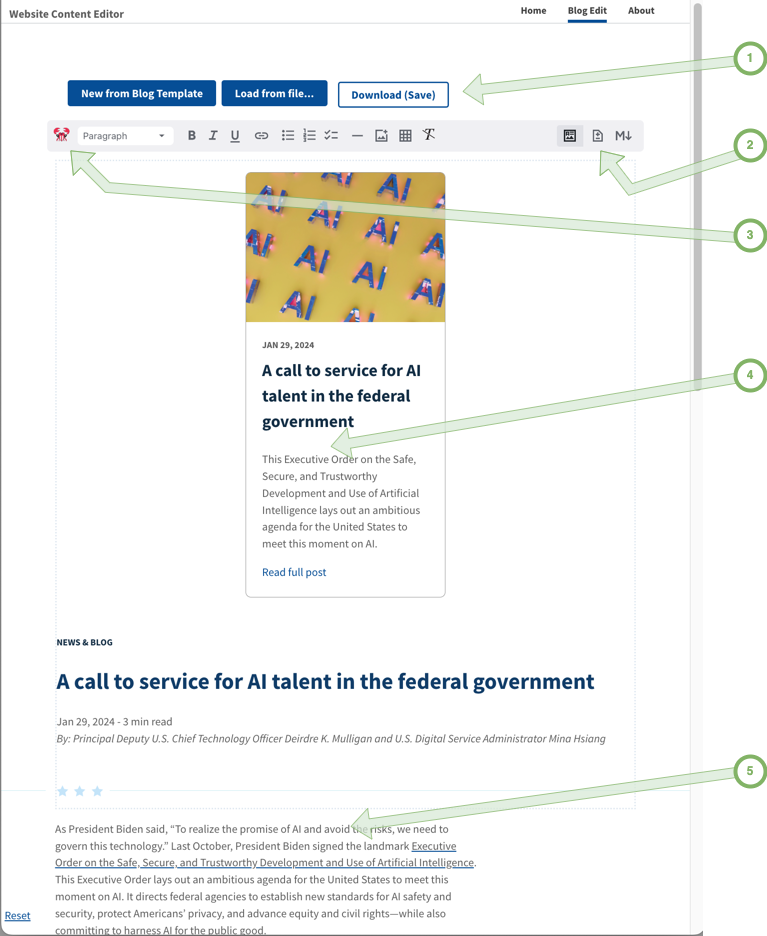This tool addresses the error-prone part of adding or editing posts on the Jekyll Frontmatter website, editing the yaml header and markdown content using WYSIWYG editor and guided forms modals.
A static-html, front-end React client to edit markdown and have it look visually similar to how it appears on the final site.
"Serverless" in the sense that it is running locally in browser with no server interaction required.
Results of edits can be saved to the local device as a zip file, including any images used by the markdown.
Site is github pages deployed here: https://usds.github.io/website-content-editor/
- Load/save data
- Switch between WYSIWYG and markdown text editor mode.
- Edit page metadata (Front Matter header) via a modal dialog
- Read only preview of metadata. Must be edited in modal or as text.
- The rich editor section
- Heavily leverages the open source project: MDXEditor
- Customizes the Frontmatter plugin with a dialog for editing our variables.
- Loads stylesheets/fonts/image from USDS's staging site to make it visually consistent with final look-and-feel.
- Stores uploaded photos into cache and uses a service worker layer to display them in the editor
- Downloads zip file of the markdown and images ready to submitted (all without a server)
- Can "upload" some existing markdown to make quick edits.
- To deploy, merge
mainbranch intogh-pages. See branches - The deploy action will automatically run.
- Go to the github hosted website: https://usds.github.io/website-content-editor/
- Unit tests of some kind
- Handle different template types
- Create a better Quote component
- Link component showing offsite links correctly
- Help pages for how to merge in markdown edits back into website
- Need to reorganize code. Lots of things should be separated out into components.
The build scripts are all standard Vite stuff:
devBuilds + watches + runs the site in development mode.buildBuildsproductionmode into thedist/directorypreviewStarts up a webserver pointing todist/directory to check release buildsupdateIs theyarncommand to update dependencies
The service-worker is a non-standard. The normal usage of a service-worker is to provide an offline app.
OUR usage is to allow embedded images in the rich editor to function without a server.
Build-wise, the service worker script is standard .js and the two files
are copied directly into the dist/ directory. Because registerSW.js
and service-worker.js are standard javascript, they are not transpiled
and they don't import anything. So, some constants associated with the cache
are duplicated and need to kept in sync.
Site is 100% static. All content is stored in the browser's cache and localstorage.
Since it's running on github.io, we cannot set a CSP http header.
The next best thing is a <meta> header.
Vite dev mode uses hot reloading, which uses unsafe eval, so for
localdev, the CSP is disabled.
Enable/disable is done via the .env.development .env.production files.
Here's the current CSP:
<meta http-equiv="Content-Security-Policy"
content="
base-uri 'self';
default-src 'self';
script-src 'self';
style-src 'self' https://usds.github.io/ https://usds.gov/ 'unsafe-inline';
img-src 'self' https: data: blob:;
font-src 'self' https://usds.github.io/ https://usds.gov/ https://*.gov/;
form-action 'none';
worker-src 'self' https: data: blob:;">The most important items are:
default-src 'self';
script-src 'self';
These lock down scripting to just the site and prevents eval injections.
style-src 'self' https://usds.github.io/ https://usds.gov/ 'unsafe-inline';
The tool loads style scripts from website staging.
unsafe-inline is required because some of the 3rd party tools dynamically sets style= attribute.
img-src 'self' https: data: blob:;
The https: allows images to be loaded from anywhere. This allows the service-worker to
cache images from sites that are pasted into the WYSIWYG editor.
The service worker transparently passes on all requests that are not images.
⚠️ This package as well as MDXEditor both use lexical and other libraries; therefore, both must use the same VERSION or you'll get strange typescript errors / runtime errors!
To make this breakage more explicit, the yarn locks in the same version as MDXEdtor
"peerDependencies": {
"react": "^18.2.0",
"react-dom": "^18.2.0"
},
"resolutions": {
"@lexical/react": "^0.14.3",
"@mdxeditor/gurx": "^1.1.3",
"downshift": "^7.6.0",
"lexical": "^0.14.3",
"mdast-util-from-markdown": "^2.0.0",
"mdast-util-frontmatter": "^2.0.1",
"mdast-util-gfm": "^3.0.0",
"micromark-extension-gfm": "^3.0.0"
},If the packages ever get out of sync, you'll start getting like typescript compile warnings like this:
"warning "@mdxeditor/editor > @lexical/utils > @lexical/table@0.12.6" has incorrect peer dependency "lexical@0.12.6"."
The package from MDXEditor that determines which versions to use (aka our package must stay in sync with) can be found here: https://github.com/mdx-editor/editor/blob/main/package.json
In chrome debugger, the Applications tab shows the service workers features.
You should check the "Update on reload"

The current list of cached images can be viewed under Cache Storage

